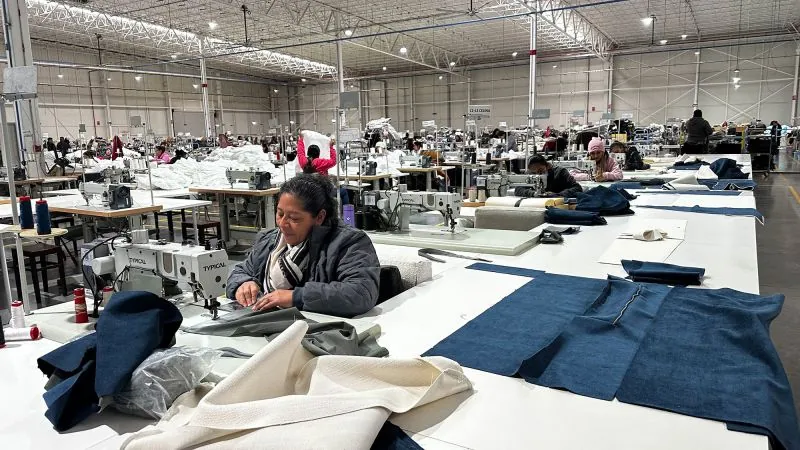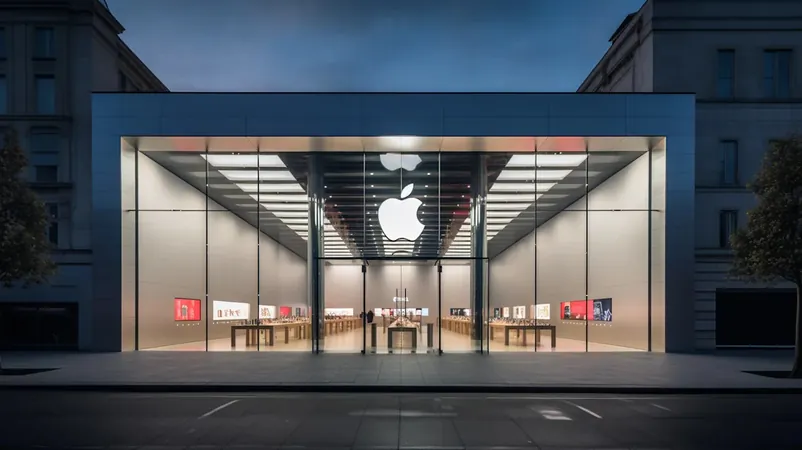
The Rise of Industrial Chinatowns: How Mexican Economies Brace for Potential Trump Tariffs
2025-01-18
Author: Michael
In a remarkable twist to international trade dynamics, an industrial park, dubbed the “industrial Chinatown,” has emerged just a few hours from the Texas border, in northern Mexico. This vast manufacturing complex features warehouse-sized units adorned with Chinese-themed red and gold logos, with the unmistakable aromas of Peking duck wafting from on-site eateries.
Nestled away from bustling cities like Beijing or Shanghai, this unique enclave has become a critical hub for Chinese companies relocating their production operations to Mexico. With street signs in both Spanish and Chinese and a flagpole flaunting the People's Republic alongside the Mexican flag, this industrial complex symbolizes the growing interdependence between Mexico and China.
The phenomenon of “nearshoring” has enabled Chinese firms to secure tariff-free access to the US market, thanks to the USMCA trade agreement. This incentive has led to a significant influx of Chinese investment, primarily fueled by previous tariffs imposed on Chinese goods entering the US—tariffs that have not been rolled back under President Joe Biden. As speculation arises regarding President-elect Donald Trump's intentions to reintroduce tariffs targeted at Mexico and other nations, local manufacturers are meticulously planning their next steps, worried about potential disruptions to their burgeoning businesses.
Matt Harrison, president of Kuka Home North America, expressed grave concerns over the impending tariff threats, stating, “Simply put, a 25% tariff on Mexico puts me out of business.” Meanwhile, César Santos, who has extended a warm welcome to Chinese investments on his ancestral land, forecasts continued success for his ventures. “Even with tariffs, many companies believe it’s a better option than manufacturing in China,” he noted, highlighting a unique resilience among entrepreneurs adapting to a rapidly evolving economic environment.
Adapting to Change: From Ranching to Manufacturing
Santos, whose family ranch has transitioned into a sprawling industrial hub over the past decade, remembers the days of horseback riding across the land now bustling with factories and housing developments. Since 2013, his collaboration with Chinese investors has led to the establishment of Hofusan, a thriving industrial park that already hosts around 40 Chinese companies engaged in a spectrum of production, from electronics to furniture.
Chinese investment in Mexico has skyrocketed from a mere $5.5 million in 2013 to an astounding $570 million by 2022. The first half of 2024 alone witnessed $235 million in new investments, underscoring Mexico's appeal as a manufacturing destination.
As factories churn out products destined for the US market, Santos believes that even if Trump implements tariffs, the advantages of manufacturing closer to consumers will hold strong. Further fortifying his commitment to local security, Santos has allocated land for a police station adjacent to his industrial site, demonstrating a proactive approach to community safety amidst rising concerns over cartel violence in the region.
Cultural Bridges and Economic Opportunities
The atmosphere in industrial Chinatowns is vibrant, characterized by a blend of Mexican and Chinese cultures. Developer Ramiro González, affectionately nicknamed “Da Long” or “Big Dragon,” emphasizes the importance of melding operational efficiency from Chinese practices with local customs. As he oversees new construction projects, the local workforce is collaborating closely with incoming Chinese engineers, each acclimating to the other's work ethic and expectations.
However, personal challenges persist for some workers. Zhang Jianqiu, a Chinese engineer, candidly shares his homesickness while navigating cultural differences and seeking comfort in familiar tastes, like Chinese tea. Nevertheless, he finds joy in bridging the gap between the two cultures, facilitating a smooth integration of Chinese business practices in Mexican surroundings.
Despite the uncertainty surrounding potential tariffs, industry insiders like Zhang remain optimistic, noting that Chinese companies are evaluating their options while adapting to diverse global challenges. Economists warn that any tariff imposition is likely to affect American consumers, while businesses like Kuka Home may explore alternate manufacturing locales like Vietnam, reigniting discussions about global supply chain dynamics.
Caught in a Geopolitical Triangle
As tensions rise, Horacio Carreón, an international business professor, observes a unique geopolitical dilemma for Mexico, caught between its traditional economic partner, the US, and the emerging Chinese influence. The current climate mimics a dramatic telenovela, with Mexico playing a significant role amidst international trade negotiations and tariff discussions.
In the face of these challenges, Mexican industries have experienced unprecedented growth. In fact, 2023 marked a historic moment, with Mexico overtaking China as the leading exporter to the United States. González confirms that demand for new industrial spaces continues to rise, highlighting the tremendous job creation and economic opportunities in the wake of these shifting trade patterns.
Santos remains vigilantly open to change, stating, “If the US market becomes too challenging, we’ll look to Latin America and beyond.” The close-knit ties between China and Mexico exemplify how geographical proximity and economic collaboration can reshape the future of global trade, regardless of political uncertainties. As Chinese companies invest heavily in this burgeoning landscape, the fate of the industrial Chinatowns will significantly depend on forthcoming political decisions and market dynamics.









 Brasil (PT)
Brasil (PT)
 Canada (EN)
Canada (EN)
 Chile (ES)
Chile (ES)
 Česko (CS)
Česko (CS)
 대한민국 (KO)
대한민국 (KO)
 España (ES)
España (ES)
 France (FR)
France (FR)
 Hong Kong (EN)
Hong Kong (EN)
 Italia (IT)
Italia (IT)
 日本 (JA)
日本 (JA)
 Magyarország (HU)
Magyarország (HU)
 Norge (NO)
Norge (NO)
 Polska (PL)
Polska (PL)
 Schweiz (DE)
Schweiz (DE)
 Singapore (EN)
Singapore (EN)
 Sverige (SV)
Sverige (SV)
 Suomi (FI)
Suomi (FI)
 Türkiye (TR)
Türkiye (TR)
 الإمارات العربية المتحدة (AR)
الإمارات العربية المتحدة (AR)